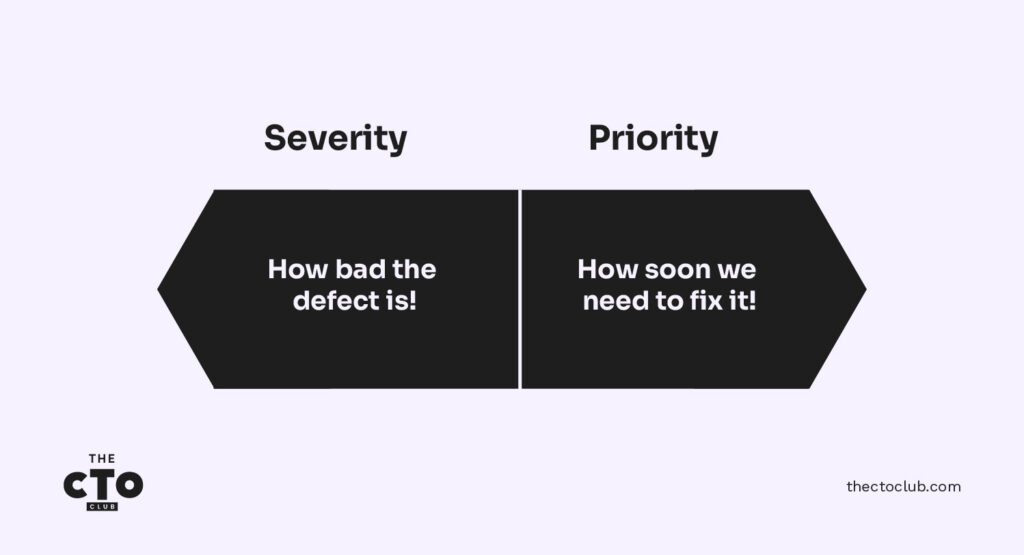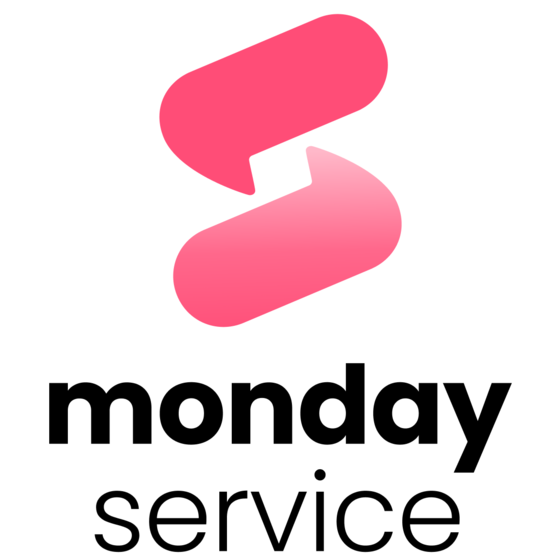Severity vs. Priority: Know the Difference: Not all critical issues are top priority, and not all low-severity tickets should be sidelined. Distinguishing between system impact (severity) and user urgency (priority) ensures your team addresses the right problems at the right time.
SLAs: The Blueprint for Success: Clear and realistic Service Level Agreements (SLAs) align customer expectations with your team’s capacity. SLAs act as your guiding framework for response and resolution times, ensuring accountability and consistency.
Automate Smart, Stay Human: Use automation to streamline workflows, from tagging tickets to prioritizing them based on predefined rules, but don’t replace meaningful team communication. Balance tools and human oversight for an efficient and empathetic support system.
Training: Your Secret Weapon: Continuous training equips your team with the knowledge to handle new features and updates, reducing delays and boosting confidence. A well-informed team delivers faster resolutions, happier customers, and fewer headaches.
As someone who’s been both a CTO and a Product & Support Manager for software companies, I’ve learned that ticket prioritization is all about striking a balance. Internally, it’s about keeping the product team efficient—juggling quick wins that are easy to resolve with more complex, high-impact issues that take time.
Externally, it’s about meeting customer expectations, even when “defect-free 100% of the time” isn’t realistic. The challenge lies in assessing each ticket’s severity and impact, aligning them with SLAs, security risks, and user experience—not just listening to the loudest voice in the room.
Let’s be honest: my approach to ticket prioritization isn’t a one-size-fits-all solution. Smaller companies might lean toward appeasing major customers who cover the bills, while larger organizations may prioritize security and compliance to protect their reputation.
Regardless of the size or type of your organization, the goal remains the same—create a prioritization system that effectively allocates resources, keeps communication clear, and ensures that both customers and teams are satisfied. Done right, this means faster response times, happier customers, motivated teams, and fewer fire drills.
Let’s break down how to get there.
What is Ticket Prioritization?
Ticket prioritization is the process of organizing and ranking customer support or internal issue tickets based on their urgency, impact, and business value. It’s a critical practice for support teams, ensuring that resources are allocated efficiently and that the most pressing issues are addressed first.
At its core, ticket prioritization involves assessing both the severity of an issue (how much it affects system functionality) and its priority (how urgently it impacts users or the business).
For example, a security breach or a system outage affecting all users might be classified as a critical, high-priority issue, demanding immediate attention. In contrast, a minor visual bug or a feature request might be lower priority. By implementing a clear prioritization system, organizations can prevent bottlenecks, reduce ticket backlogs, and ensure that teams focus their efforts on what matters most.
Efficient responses mean fewer follow-up tickets, less churn, and less time spent on complex issues. All of this leads to a support team that can operate with optimal and more efficient resources.
Understanding Ticket Priority Levels
Ticket prioritization and ticket severity should always be considered together.
Ticket severity levels measure the impact on the system. A webpage that doesn’t load or data not saving properly would be high severity level issues, while a spelling error would have a low severity level because it doesn’t impact the usage of the software.
Priority levels measure the impact on the business or user. A user not being able to log into a website is a high-priority issue, while a screen crashing because a user entered 50 nicknames for themselves (I personally only have 3), isn’t a normal workflow and most likely would be a lower-priority ticket.

Both priority and severity have their own levels. Let’s take a look at these:
Common Ticket Priority Levels
- High Priority (P1): This is an issue that requires immediate attention because it affects essential functions, blocks users, or poses a significant business risk. For my teams, security related issues are always P1’s. We never want to leave open doors that may compromise data. A user not being able to log in, a screen not loading, or a system crash should also be considered at this level.
- Medium Priority (P2): This is an issue that impacts usability or performance but doesn’t halt essential functions. We should fix it soon, but we don’t have to drop everything to fix it as an emergency. For my teams, P2’s are usually ‘annoying’ issues. A popup that needs to be moved every time to proceed. Performance issues such as long waiting or loading times. Issues that impact the performance of the user or otherwise alter the normal flow.
- Low Priority (P3): This is a minor issue with minimal impact on usability. These are your non-impactful GUI issues (spelling, alignment, grammar, etc..), or even nice-to-have customer requests that the product team decides to address as an issue instead of an enhancement. Don’t underestimate the power and impact that a simple gesture like this can have on your customer. A little goodwill goes a long way!
Common Ticket Severity Levels
- Critical Severity (S1): The dreaded critical defect. This is an issue that completely breaks the system (or a critical feature), making it unusable for end-users. data loss, or even perceived data loss to the end user, is always an S1 with my teams. We don’t want our customers to lose any data whenever possible. As I also mentioned earlier, security issues are almost always going to be an S1.
- High Severity (S2): This is an issue that disrupts core functionality but doesn’t entirely disable the product. When there is an acceptable workaround, the issue can be downgraded from an S1 to an S2 with agreement by all stakeholders. A user not being able to access a specific report or dashboard, but still being able to enter the needed data, would typically be classified as an S2. Especially if the user has an alternate way of accessing the data they entered.
- Medium Severity (S3): This is an issue that doesn’t prevent users from using the main features, but it might disrupt the overall usability of the system. Think of features that are in your system, don’t get used heavily, or are not a critical and core feature but are not working exactly correctly.
- Low Severity (S4): This is a minor issue that has minimal impact on the user experience or system functionality. Spelling errors, misaligned graphics, or overlapping input fields are all examples of how I use the S4 classification.
The severity level and priority level are not always going to be the same. A defect may have critical severity, but that doesn't necessarily mean it's the top priority, and the reverse can also be true.
Remember my example of a user trying to enter 50 nicknames for themselves, and the screen crashing? I would mark that as a severity 2 (S2) issue with a priority level 3 (P3). We never like to have a screen crash so we would classify it as an S2. However, in this case where it is not a normal flow and probably only happens 1 out of every 100 days, it is a low-priority P3 for that reason.
Customizing Priority Levels for Your Team
I mentioned at the beginning that not every company can, or should, implement their ticket prioritization the same way. I think each company should create its ticket prioritization specifications based on its unique needs.
Small software companies often lack the full range of specialized roles in their product department—such as product owners, QA managers, QA leads, architects, developers, and scrum masters—all of which play a part in determining ticket severity and priority.
On the other hand, larger companies face their own set of challenges, including coordinating prioritization systems across multiple teams and departments, managing the high volume of tickets that can lead to misclassification, and addressing escalation bias from influential stakeholders like managers or major customers. Both scenarios highlight the importance of creating a clear, adaptable prioritization framework that suits the organization’s unique structure and needs.
While creating a set of guidelines that work for your organization is important, you don't need to start from scratch or to override industry standards. Stick with the common priority and severity levels. They are standard for a reason. Use basic criteria and common sense to classify your levels. It doesn’t need to be rocket science, but it does need to be clear and concise.
The more you try to handle every single use case in the wording of your classification levels, the murkier the water gets. Plus, you will inevitably leave out a use case anyway.
Here are some factors I would consider customizing based on the individual organization I am responsible for at the time:
- Customer Impact: Assess how much the issue affects users. Have your team ask if the issue affects all customers, a specific segment/region, or just one customer? Issues that impact a larger customer base should typically be prioritized higher than issues that affect only one customer. However, if that one customer is your bread-and-butter customer that pays a larger chunk of your product budget, by all means, prioritize their issues more than others.
- Severity and Urgency: Evaluate how critical the issue is to your product functionality. An issue blocking core functionality for users or causing crashes will typically be deemed urgent, while minor visual issues can usually wait.
- Support Team Bandwidth: Consider your available resources and expertise. If a quick solution is feasible, resolving a lower-priority issue can boost productivity and build goodwill with your customers. If you have a larger team where you have senior and junior expertise, you may want to consider segmenting your resource assignments based upon the availability of their knowledge so that you maximize your knowledge base.
- SLAs (Service Level Agreements): SLAs are another way to customize what works for your organization based on resources, capabilities, and customer base. I will get into how SLAs can, and should, work a bit later on but SLAs (like ticket prioritization) can and should be unique for each organization. One size does not fit all for SLAs.
- Business Impact: Last, but not least, is the impact felt by your customers. Or better yet, what is your customer base, what industry do they serve, and how are their operations impacted by your software? Are you building software for NASA that needs independent verification and validation or needs to adhere to Software Assurance and Software Safety Standard (NASA-STD-8739.8)? Or, are your customers healthcare companies that need to comply to HIPPA regulations? Maybe your customer base is the general public who just wants good software that works well and isn’t buggy. Whatever the case is, the business impact should be adjusted accordingly.
Benefits of an Effective Ticket Prioritization System
Implementing an effective ticket prioritization system can provide a number of benefits to your organization, such as streamlining issue management, improving customer satisfaction, and boosting team productivity.
These combined wins will enable you, and your teams, to deliver a more reliable product and a responsive support experience that includes:
- Enhanced Customer Satisfaction: By prioritizing tickets based on urgency and impact, high-priority issues are addressed quickly, helping to reduce customer frustration and improve overall satisfaction. When your customers see that their issues are handled efficiently, it increases their trust in your company,
- Efficient Resource Allocation: A ticket prioritization system helps teams focus on the most pressing issues, reducing wasted time and ensuring that efforts are spent where they matter most. It also helps avoid overloading different team members, and instead it ensures your resources are appropriately assigned across high, medium, and low-priority tickets.
- Reduced Backlog: Ticket prioritization helps avoid backlog accumulation. When tickets are evaluated and prioritized correctly, the most critical issues are handled promptly. This helps prevent a build-up of unresolved tickets. Additionally, when issues are categorized and based on urgency, it helps achieve faster response and resolution times. These faster times will impact your performance metrics in a positive way, directly helping you to meet your SLA requirements.
- Clear Communication and Transparency: A structured prioritization system helps set clear expectations for customers regarding response and resolution times. While customers may want every issue fixed immediately, transparency about what’s feasible fosters understanding and trust. Establishing these expectations upfront simplifies conversations about adjusting priorities and ensures internal teams are aligned, reducing misunderstandings and inconsistencies in ticket handling.
- Increased Insight into Product Health: By tracking and categorizing your tickets, it becomes much easier to identify recurring problems and root causes. This will not only lead to your team creating an improved product stability, but it also assists in reinforcing a proactive approach to quality assurance.
- Better Compliance and SLA Management: Ticket prioritization specifications will align with your SLA requirements. This ensures that critical issues are addressed within agreed timeframes, reducing the risk of SLA breaches and maintaining the trust you have already built with your customers. It also ensures industries with compliance or regulatory obligations are assured that tickets meeting certain criteria are handled swiftly and supporting their compliance objectives.
Like with any practice, analyzing ITSM ticket data works best with a defined flow. Service desks improve their services by leveraging ticket data to inform their actions, but many organizations don’t know where to start. It’s tempting to wait for perfect data, but there’s a lot of value in analyzing ticket data as it exists today.
How to Prioritize Tickets
With countless issues vying for attention, it’s not enough to simply address tickets in the order they arrive. Successful prioritization considers factors like severity, urgency, and business impact. By implementing a structured system, teams can tackle the most critical issues first, reduce resolution times, and ensure customer satisfaction remains high.
Enact these actionable steps to help your team master the art of ticket prioritization and create a smoother, more productive support workflow.
Define Clear SLAs
In my experience, creating and managing Service Level Agreements (SLAs) is essential to enabling good communication.
Your team needs clear guidelines to address and resolve issues effectively. Service Level Agreements (SLAs) should establish measurable response and resolution times, holding teams accountable and setting clear expectations for customers.
To build effective SLAs:
- Engage with Customers: Discuss their support and response expectations to set realistic, mutually beneficial terms. See if there are any special requirements that your customers want accounted for based on the nature of the service that you provide.
- Define SLA Tiers: Align response times with issue severity and service levels—for example, a critical system outage (S1) might require a 1-hour response, while minor issues can have a 24-hour window. Define how response and resolution times are measured.
- Set Realistic Goals: Only you know the size of your team and what they are capable of. Match SLA commitments to your team’s capacity and resources, ensuring consistent delivery.
- Plan for Escalations: Define protocols for unresolved issues that need additional resources or higher-level attention.
By aligning SLAs with your ticket prioritization strategy, you can provide consistent, transparent, and efficient support.
Top Help Desk Software!
| Tool | Best For | Trial Info | Price | ||
|---|---|---|---|---|---|
| 1 | Best for tracking internal support requests | Free trial available | From $26/seat/month (3 seat minimum) | Website | |
| 2 | Best for AI-driven IT automation | 14-day free trial + free demo available | From $19/user/month (billed annually) | Website | |
| 3 | Best for AI-powered ticket automation | Free trial available | From $149/technician/month (billed annually) | Website | |
| 4 | Best for full context tickets | Free trial available | From $79/license/month (billed annually) | Website | |
| 5 | Best for providing tailored assistance | 15-day free trial | From $7/user/month (billed annually) | Website | |
| 6 | Best for round-robin issue assignment | Free trial + free demo available | From $27/user/month | Website | |
| 7 | Best for multi-channel communication | 30-day free trial | From $15/agent/month (billed annually) | Website | |
| 8 | Best for AI-powered chatbots | Free trial available | From $9/member/month | Website | |
| 9 | Best for intuitive ticket management | 14-day free trial + free plan available | From $15/user/month (billed annually) | Website | |
| 10 | Best for AI-driven customer support | 7-day free trial + free plan available | From $25/user/month | Website |
Leverage Software for Performance Tracking
I am a firm believer that software should be used as a tool and not a crutch to rely on. Tools like dashboards are invaluable for providing real-time visibility into ticket statuses, response times, and backlog trends. They help teams stay on track and identify areas needing attention, but they shouldn’t replace meaningful team engagement or communication.
Here’s how to effectively use software for performance tracking:
- Set Up Dashboards for Real-Time Insights: Use dashboards to monitor key metrics like ticket status, SLA compliance, and backlog size at a glance.
- Conduct Regular Performance Reviews: Schedule weekly or monthly reviews to evaluate team performance against SLA targets, identify bottlenecks, and implement improvements.
- Analyze Tracked Data: Use historical data to uncover trends, evaluate workload distribution, and adjust resource allocation as needed.
- Integrate SLAs into KPIs: Incorporate SLA-related metrics—such as response rates, resolution times, or customer satisfaction—into individual and team performance goals to reinforce accountability.
- Balance Automation with Human Oversight: While dashboards are useful, engage directly with your team to understand challenges and provide support where needed.
By combining automated tracking with regular reviews and team engagement, you can create a well-rounded system that boosts productivity, accountability, and customer satisfaction.
Continous Training
Your product or platform is continually changing with new features and updates to existing features to address issues confidently and meet SLA commitments. An untrained analyst faced with an unfamiliar feature can delay resolution times, impact customer satisfaction, and create unnecessary roadblocks.
Supporting your team, indeed all relevant stakeholders, with ongoing training will pay dividends in the long run. Here are some best practices:
- Create Accessible Knowledge Repositories: Maintain an updated internal knowledge base or wiki where team members can quickly find information about product features and known issues.
- Simulate Real-World Scenarios: Use hands-on exercises, such as mock issue resolution or feature walkthroughs, to reinforce learning and build confidence.
- Encourage Cross-Team Collaboration: Involve product developers, QA teams, and other departments to share insights and context about new features and updates.
- Provide Role-Specific Training: Tailor sessions to different team roles, ensuring that everyone—from frontline support to escalation specialists—has the specific knowledge they need.
- Leverage Microlearning: Break training into bite-sized modules that are easier to consume and less disruptive to daily operations.
- Track Training Progress: Use metrics to monitor training completion rates, knowledge retention, and its impact on resolution times and SLA compliance.
By prioritizing continuous training, you'll enable your team to respond effectively to evolving challenges plus boost morale and build confidence. A well-trained team is an empowered team, capable of delivering exceptional support and ensuring customer satisfaction.
Streamlining Through Automation
Use help desk tools to automatically assign priority levels based on predefined rules, such as keywords, tags, or past ticket history.
I love to implement tags for grouping and organizing tickets and issues. Tags make it easier to search for specific issues, track recurring problems, and identify patterns that inform product improvements or feature enhancements.
Key benefits of tagging include:
- Enhanced Searchability: Quickly locate tickets without sifting through the queue.
- Pattern Recognition: Identify recurring issues to guide proactive product improvements.
- Personalized Customer Support: Tailor responses based on a customer's unique history by tagging related tickets.
- Efficient Resource Allocation: Developers can address multiple similar issues at once, improving resolution times and boosting performance metrics.
This is especially useful in systems handling large volumes of tickets, as tags make it easier to find specific issues without manually sifting through the queue.
I am also a fan of AI, FAQs, and self-serve options being built or integrated into a platform. A well-organized knowledge base allows customers to find answers to common questions or troubleshooting steps.
For instance, if a customer types, “How do I update my profile?” the bot can suggest an article with step-by-step instructions. This integration bridges the gap between chatbots and self-service resources, resolving simple and lower priority issues with minimal human intervention.
This approach ensures that the support team spends more time on high-priority or complex cases, while customers benefit from faster resolutions to their everyday needs.
Challenges and Solutions in Ticket Prioritization
Even the most well-defined ticket prioritization systems can face challenges that disrupt workflows and impact customer satisfaction. Obstacles can overwhelm teams if left unaddressed.
Take a look at these common challenges and my suggested solutions to keep your support operations running smoothly:
Avoid Over-Prioritization
Over-Prioritization. Yes, that’s a thing! Every ticket can’t be a critical issue. When too many tickets are assigned high priority, the impact of truly critical issues is diluted. This dilution can lead to impactful items not receiving the attention they truly require.
Plus, when everything is high-priority, teams may struggle to respond to or resolve tickets promptly, especially when high-priority tickets should ideally be handled more quickly than others. At best, this can lead to team burnout. At worst, customer satisfaction will go down over time, resulting in a loss of trust.
Over-prioritization can be avoided with some simple steps.
- Establish Consistent Ticket Assessment Processes: Over time, team members may start to mark issues as higher priority by default. Using a decision matrix and conducting regular reviews will help to realign priorities and ensure adherence to original standards.
- Define Clear Priority Levels and Criteria: Create distinct definitions for high, medium, and low priorities, emphasizing factors like impact, urgency, and risk. This clarity prevents teams from assigning high priority to tickets unless they truly meet critical criteria. nsure that priority levels are in line with the company's goals and customer commitments. For example, issues impacting compliance or SLAs may take precedence over non-critical feature requests, helping prioritize tasks that align with business value.
- Monitor and Review Prioritization Data: Periodically audit ticket priorities to check for patterns. If you find frequent high-priority assignments that do not align with defined criteria, adjust your process or definitions accordingly.
- Encourage Open Communication: Educate your team members on how to assess the true impact of an issue. Guide them to understand when a ticket is truly high-priority. Over-prioritization can result from pressure to please customers. Set realistic expectations with clients regarding response times based on ticket priority, clarifying that high-priority tickets are reserved for critical issues only.
Manage Ticket Backlogs
Managing a software ticket backlog can feel like clearing an endless inbox, especially when the ticket count starts to climb. But with a few strategic moves, you can keep it from snowballing into something unmanageable.
For me, regular reviews are my first line of defense. I channel recollections of my youth (many, MANY years ago). Every week, my mom would make go through each room in the house, empty the trash cans, and then take the garbage bins to the curb. Your review should be like going cleaning out your trash cans. Every week go through the backlog to weed out tickets that are outdated, resolved elsewhere, or maybe aren’t even valid anymore.
Another method for managing the backlog is through re-prioritization. It’s easy to let customers and peer bias to start encroaching on your well constructed guidelines resulting in a lopsided backlog of high-priority and high-severity issues. However, we have already established that not every ticket is actually a high-priority. By consistently re-evaluating priorities and conducting regular training, you can shift focus to what's actually critical. Resetting priorities can help your team tackle high-impact tasks and keep things moving smoothly.
The support area is not always glamorous or fun, and can often be stressful because of high ticket volumes or unhappy customers wanting today's issue fixed yesterday. You need to find ways to keep your teams motivated and happy. Be creative with a little friendly competition or gamification of your backlog.
You know those signs often posted in warehouses that state something similar to "85 days with no accidents"? Create a goal and a deadline along those lines, toss in a small prize for motivation, and let your team go at it. This not only clears the queue faster but also encourages camaraderie.
By reviewing ticket data, organizations can improve organically. This process provides insights into the state of the environment, the health of processes, and the quality of services. Regular data analysis drives continuous improvements. The results of the ticket analysis should be acted on, which may include celebrating successes when the data looks good. If necessary, the results can inform larger changes to service desk strategy or processes. It’s also essential to communicate the results to the right stakeholders, from end users to technicians to leadership.
Improve Your Prioritization System
So your ticket system is up and running smoothly. You can now walk away, leave it be, and tackle the next big goal within your organization, right? Wrong! This needs to be a living system that is analyzed and reassessed regularly.
I recommend identifying the criteria and metrics that work best for you and your organization. Here are some metrics that I use on a regular basis:
Customer Satisfaction: Yes, I know this is a no-brainer, but you would be surprised how many people get caught up in focusing only on ticket times, reopen rates, and more. Your customers are your best metric. Check in with them and gauge if you are meeting their expectations. Use surveys and feedback forms to help collect information. If you are getting feedback that they are unhappy with how timely low-priority issues are resolved, it might be time to reevaluate your criteria for low-priority issues.
Internal Feedback: Since they work directly with the ticket system, your team members often have invaluable insights. Are they informing you that they are seeing bottlenecks occurring frequently? They may also be seeing priority classification being overused. Soliciting feedback from your team helps to keep them engaged and feeling they are a part of the process.
Resolution Time: What is the average resolution time your team is producing? Consistent, short resolution times on high-priority tickets reflect that the team is handling urgent matters efficiently. On the other hand, a high average could be indicative of symptoms like overload or over-prioritization. Compare your average resolution times against your SLAs. This will show you whether each priority level is receiving appropriate attention and meeting agreed-upon standards. Don’t be afraid to adjust your levels in both directions.
Final Thoughts
A good ticket prioritization system is like a roadmap for your support team. It shows them where to go first, ensuring the most critical issues are handled immediately while keeping everything else in plain sight. You will be pleasantly surprised with the amount of time it saves, not to mention cutting down on chaos.
But the real wins happen when you keep an eye on it. Actively monitoring how tickets are prioritized means you can catch any hiccups early. This gives you the ability to adjust on the fly and make sure that things continue to run smoothly, even as they change.
It’s like keeping your car tuned up. Change the oil, check the tires, and give it gas, and it will keep you moving forward and save a lot of headaches down the road.
Subscribe to The CTO Club’s newsletter for more ticket prioritization tips, tools, and best practices.














